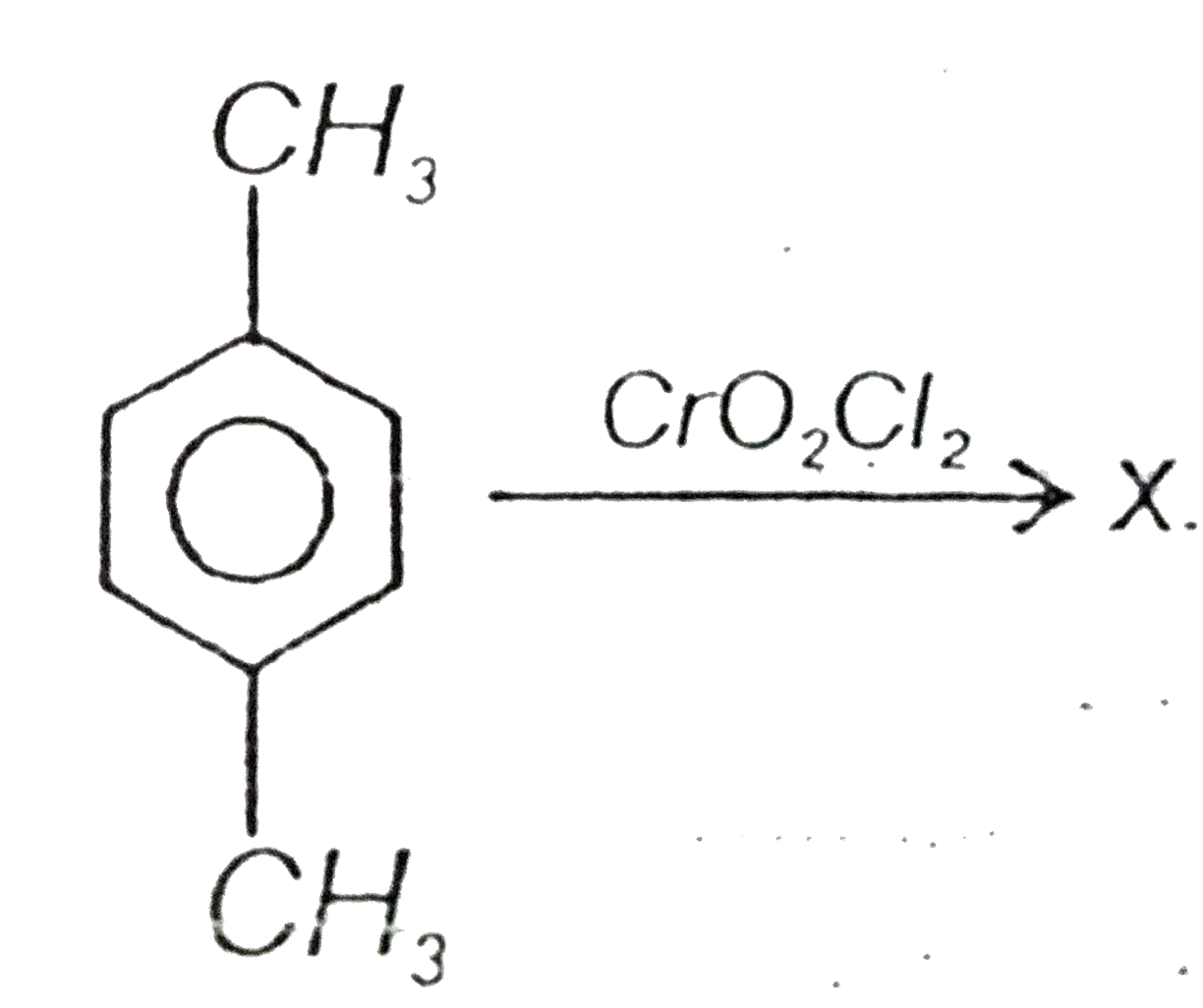Complete the missing links .
ACH3MgBr−−−−−→BH3O+−−−→C
CH3COCH3,(CH3)3COMgBr,(CH3)3COH
CH3COOH,(CH3)CHOMgBr,CH3CH2OH
(CH3COO)2Ca,CH3CH2OMgBr,CH2CH∣OH−CH3
CH3COOCH3,(CH3)3COMgBr,CH3−CH∣OH−CH3
The correct Answer is:A
CH3COCH3(A)CHMgBr−−−−−→CH3−CH3∣C∣CH3(B)−OMgBrH3O+−−−→CH3−CH3∣C∣CH3(A)−OH
Topper's Solved these Questions
- ALCOHOLS,PHENOLS AND ETHERSBOOK - NCERT FINGERTIPSCHAPTER - ALCOHOLS,PHENOLS AND ETHERSEXERCISE - Some Commercially Important Alcohols
4 Videos
- ALCOHOLS,PHENOLS AND ETHERSBOOK - NCERT FINGERTIPSCHAPTER - ALCOHOLS,PHENOLS AND ETHERSEXERCISE - Ethers
17 Videos
- ALCOHOLS,PHENOLS AND ETHERSBOOK - NCERT FINGERTIPSCHAPTER - ALCOHOLS,PHENOLS AND ETHERSEXERCISE - Structures Of Functional Groups
2 Videos
- ALDEHYDES, KETONES AND CARBOXYLIC ACIDSBOOK - NCERT FINGERTIPSCHAPTER - ALDEHYDES, KETONES AND CARBOXYLIC ACIDSEXERCISE - Assertion And Reason
15 Videos
Similar Questions
Complete the missing links in the following
(i). CH3CH2CH2OHPBr3−−→[A]alc.KOH−−−−−→[B]HBr−−→[C]NH3−−→[D]
(ii). CH3CH2CH2Ialc.KOH−−−−−→[A]H+/H2O−−−−−→[B]SOCl2−−−→[C]LiAlH4−−−→[D]
(iii). CH3CHBrCH3alc.KOH−−−−−→[A]HBr−−−−→Peroxide[B]NaI−−−−→Acetone[C]Mg−−→Ether[D]
View SolutionComplete the following reaction:
(i) CH3−C∣∣O−CH3CH3,MgBr−−−−−−→Dry etherAH+−−→H2OB
(ii) CH3−CH2−CH2−CHOH2/Ni−−−→A
View Solution
Knowledge Check
Ph−CH=CH−−COH(i)CH3CH2MgBr−−−−−−−−−−−→(ii)H3O⊕−−−−−−→(X)Cu,Δ−−−→(Y)
AX is 1,4-addition product , Y is Ph−C∣∣O−CH=CH−CH2−CH3BX is 1,2-addition product , Y is Ph−CH=CH−C∣∣O−CH2−CH3CX is 1,4-addition product , Y is Ph−CH=CH−C∣∣O−CH2−CH3DX is 1,2 addition product , Y is Ph−C∣∣O−CH=CH−CH2−CH3In the following reaction, C is
CH3−CH=CH2HI−−→AKCN−−→BH2∅H+−−−−→CACH3CH2COOHBCH3−CH2−CH3CCH3OHDCH3C∣CH3HCOOHCompounds (A) and (C ) in the following reactions are
CH3CHO(i)CH3MgBr−−−−−−−−→(ii)H2O(A)H2SO4,Δ−−−−−−→(B)Hydroboration oxidation−−−−−−−−−−−−−−→(C)AidenticalBpositional isomersCfunctional isomersDoptical isomers.
C8H12O2LiAlH4−−−→H2OB(two mol per mol of A)PCC−−→(C)CH3MgBr−−−−−→H3O+(D)H2CrO4−−−−−−−−→Acetone/water

(A) Identify A to D.
View SolutionComplete the following reactions:
(i) CH3−CH3∣C∣Cl−CH2CH3alcKOH−−−−→ΔAO3−−−−−→Zn/H2O(B+C)
(ii) CH3ICH−CH3alcKCN−−−−→A(i)SnCl2/HCl−−−−−−−−−−−−→(ii)H2O.OH.H2O2B
(iii) HCNHCl/AlCl3−−−−−−→A(i)C6H6Δ−−−−−−−−−−→(ii)(H2O)/H−B
(iv)
View SolutionPh−O∣∣C−CH3NaNO2−−−−−→HCl(A)AC2O−−−−−→heat(B)H3O+−−−→(C)
Product (C) of the above reaction is :
View SolutionGiven that
CH3MgBrO2−−→XCH3MgBr−−−−−→YH3O+−−−→Z The compound Z is
View SolutionHOCH2CH2CH2−O∣∣C−OCH2CH3PCC−−→(A)H2C=CHMgBr−−−−−−−−−−−−−→(1molar equivalent)(B)NH4Cl/H2O−−−−−−−→(C)KOH−−−−−→H2OH3O⊕−−−→⎛⎜ ⎜ ⎜⎝CH3−O∣∣C⎞⎟ ⎟ ⎟⎠2O−−−−−−−−−−−−→Pyridine(D)
Product (D) is :
View Solution
